Table Of Contents
XML In Excel – Extensible Markup Language
XML are the files used in the databases which are shared over the web. Excel has made it easier for us to import the data in XML to Excel in the form of tables or databases. XML is external data that can be imported to Excel from the “Data” tab under the “Get Data” tab from the data from other sources.
XML – extensible markup language is the most common format to work and analyze data in this modern world. Excel allows us to convert spreadsheet data into XML files, and getting started is strange for common Excel users.
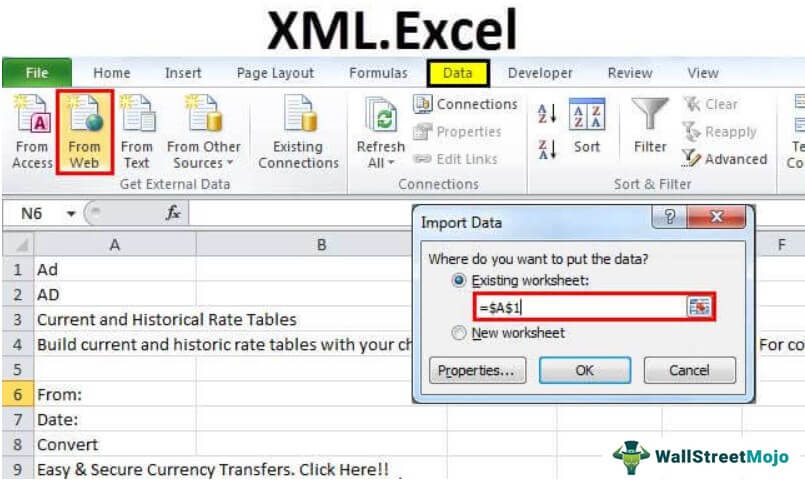
Table of Contents
- XML in excel is known as eXtensible Markup Language. It is useful for users who share the data via web.
- We can easily import data in XML to Excel.
- To import XML to Excel, simply click on Get Data under Data tab in Excel.
- Remember, Head and tails should be the same under notepad coding. Also, we need to save the file as .XML in Excel.
- In addition, XML is available as add-ins too. Search on the internet for more information regarding this.
How To Import XML Data Into Excel?
Let us see how to import XML data into Excel with apt examples.
Examples
Example #1 – Website (XML Data) Data Download
When searching the internet, we may find some useful information on the web. However, we need that data dumped into the worksheet of Excel. This article will show you how to download the data from the web server to a worksheet in Excel.
Assume you are working with foreign markets regularly and need the data of all the currency exchange rates for INR. Usually, we rely on XE.com for all the historical currency rates.
Follow the steps below to download the currency rates for 17th Jan 2019.
- Open the XE.com website.
- Search for "Historical Currency Rates."
- Select the currency and date which you want the data for. For example, we have selected INR and 17-04-2019.
- Go to the "Data" tab in Excel, and under "Get Data," select the "From Web" option.

- Once you click on this, you will see this window.

- Now, copy the URL you have created in XE.com and paste it into the "Address" section and click on "Go."

- After clicking on "Go," you will see the webpage.

- Once you see the result click on "Import."

- After clicking the "IMPORT" button, Excel will ask you where to store the data. Select A1 as the cell reference.

- After selecting the cell reference, excel will store the XML data as it is on the website and will take a few seconds to complete it.

This way, we can download the data from web servers and have our data in the spreadsheet.
Example #2 – Add XML (Markup Schema) To Excel
To add “XML Schema,” we need perfect column headings. We can create an XML Schema by using column headings.
- Step 1: Open Notepad and copy the below code and paste.
<?xml version="1.0" encoding="UTF-8" standalone="yes"?> <data-set xmlns:xsi="http://www.w3.org/2001/XMLSchema-instance"> <record> <Name>Amar Jyothi</Name> <Salary>14051</Salary> <Department>Sales</Department> </record> <record> <Name>Radha</Name> <Salary>17061</Salary> <Department>Marketing</Department> </record> </data-set>
- Step 2: Save this as data-set.xml
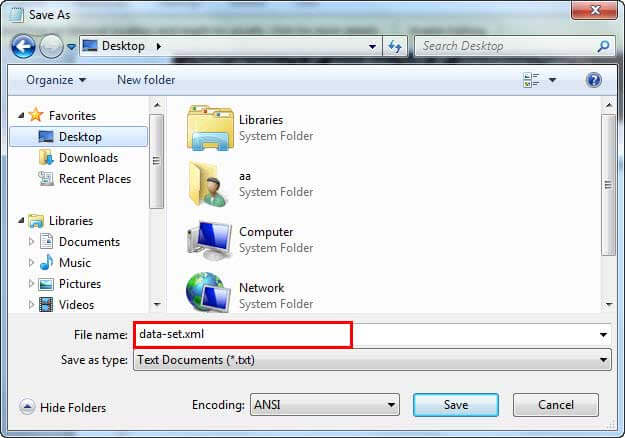
It is important to ask two pieces of information from the data. First, we have added two names’ data to the list. It is an indication of the Excel to repeat throughout the worksheet.
- Step 3: Ensure the “Developer” tab is enabled in your Excel ribbon and select “Source” from the “Developer” tab.

- Step 4: Under "XML Source" right-click on the "XML Maps."
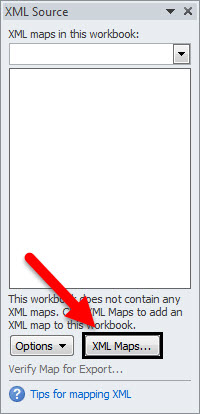
- Step 5: Select the file you want to add.
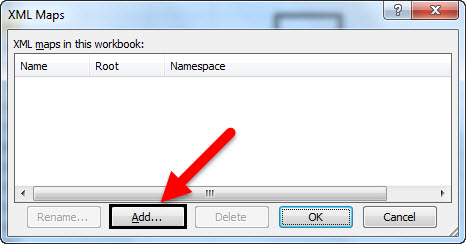
- Step 6: Select the desired file and click on the "OK" button.
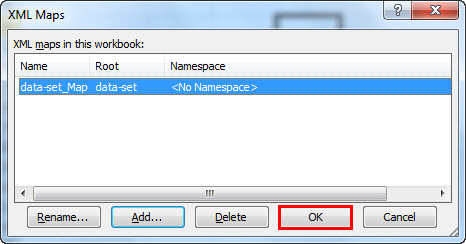
Once you click on the "OK" button, you will see the following output.
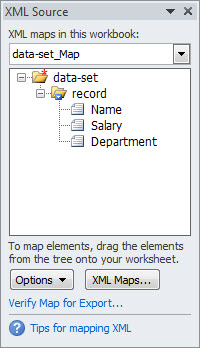
Important Things To Note
XML is one of the structured languages for a database.
- XML is an extensible markup language.
- We can import and export under XML to the spreadsheet and spreadsheet to the XML.
Frequently Asked Questions (FAQs)
XML is structured data and one of the external data sources. We create a link or import data from outside where data resides outside the spreadsheet. We have many external databases like Payroll, POS (Point of Sale), Inventory Software, SQL Servers, etc.
Like every other database software, XML has its own rules and regulations. Below are some of the common rules for XML.
• While writing the code data, both the head (start) and tail (end) should have similar tag names. For example:
<TableName> Data </TableName>
• Both head and tail are case sensitive.
The steps are:
Step 1: Open Notepad. Copy the code and paste it.
Step 2: Save it as data-set.xml
Step 3: Ensure the “Developer” tab is enabled in your Excel Ribbon and select “Source” from the “Developer” tab.
Step 4: Under "XML Source" right-click on the "XML Maps."
Step 5: Select the file you want to add.
Step 6: Select the desired file and click on the "OK" button.
Recommended Articles
This article is a guide to the XML in Excel. We discuss importing and adding XML Markup Schema to Excel and practical examples here. You can learn more about Excel from the following articles: –
- Open XML File in Excel
- VBA LEN
- File Formats in Excel
- How to Import Data into Excel?
- Share an Excel Workbook
